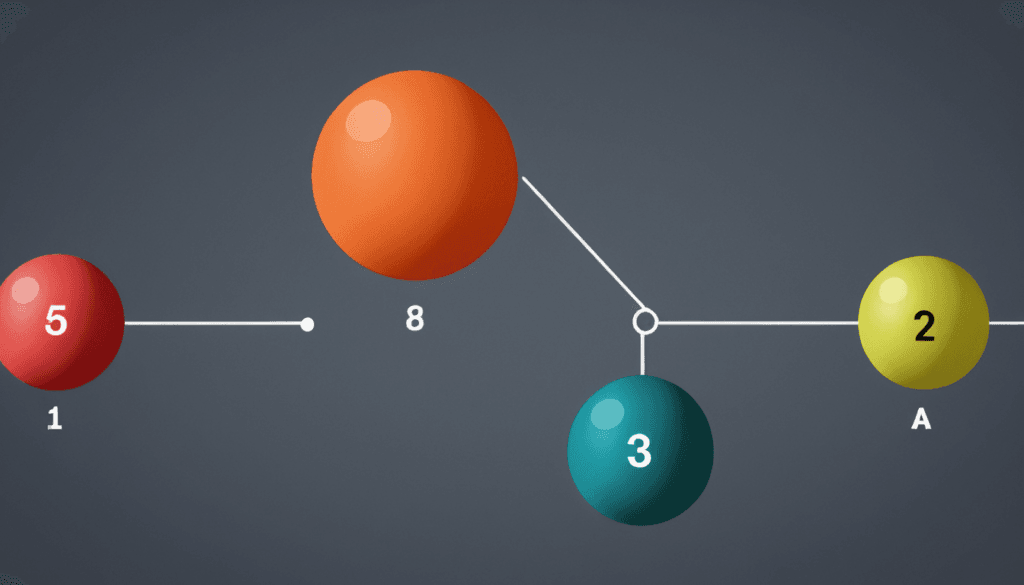
Sorting algorithms appear to be the world’s most boring subject. However, mastering them will save you in plenty of applications. Insertion Sort looks pretty simple but surprises you in certain instances. One of its strengths? The best case time complexity. Let’s dive into this, but we won’t stop there. We’ll explore how Insertion Sort works, walk through a manual example, check out some code, discuss its advantages and disadvantages, and even figure out why you might use it when faster algorithms exist.
How Insertion Sort Works
Insertion Sort operates by constructing a sorted array incrementally, much like organizing a hand of playing cards. You start with one card, and each new card is inserted into its correct position relative to the already sorted cards.

Here’s how it generally goes:
- Step 1: Start from the second element.
- Step 2: Compare the current element with the one before it.
- Step 3: Move elements that are greater than the current element one position ahead.
- Step 4: Insert the current element in its correct position.
- Step 5: Repeat until the entire list is sorted.
The best case scenario happens when the array is already sorted. In this case, Insertion Sort only needs to compare each element to its neighbor and skip the rest of the steps, resulting in very low complexity.
Best Case Time Complexity of Insertion Sort
In the best-case scenario, Insertion Sort has a time complexity of O(n). This is an example of how algorithms are evaluated using Big-O Notation, which helps us measure their efficiency. Learn more about Big-O Notation and how it applies to different algorithms.
Manual Example: Sorted Input
Let’s walk through an example to make things clearer. Suppose you’re sorting this already sorted array:
[1, 2, 3, 4, 5]
- Pass 1: Compare 2 with 1. No movement is needed.
- Pass 2: Compare 3 with 2. Again, no movement.
- Pass 3: Compare 4 with 3. Still no movement.
- Pass 4: Compare 5 with 4. No movement.
As you can see, each element is already in its place. The algorithm finishes after just n−1n-1n−1 comparisons with no shifting.
Python Code Example:
Here’s how you can implement it in Python:
def insertion_sort(arr):
for i in range(1, len(arr)):
key = arr[i]
j = i - 1
# Move elements of arr[0..i-1], that are greater than key, to one position ahead
while j >= 0 and key < arr[j]:
arr[j + 1] = arr[j]
j -= 1
arr[j + 1] = key
# Example usage
arr = [1, 2, 3, 4, 5]
insertion_sort(arr)
print(arr) # Output: [1, 2, 3, 4, 5]This code efficiently handles already sorted arrays, achieving the best-case O(n) time complexity by skipping the shifting steps.
Advantages of Insertion Sort
- Best Case Efficiency: When the input is nearly or fully sorted, the performance is O(n), making it fast.
- Simple Implementation: It’s easier to implement than more complex algorithms like Quick Sort or Merge Sort.
- Adaptive: It is adaptive to data that is already sorted, improving its performance on small, nearly sorted datasets.
- Stable: It maintains the relative order of equal elements, a property known as stability.
- Low Memory Usage: Unlike Merge Sort, Insertion Sort works in place, meaning it doesn’t require additional storage.
Disadvantages
- Worst Case Time Complexity: In the worst case, its time complexity is O(n²), which makes it inefficient for large datasets that are randomly ordered.
- Not Ideal for Large Arrays: While it’s good for small or mostly sorted data, it struggles with larger datasets due to the quadratic time complexity in average and worst cases.
Applications
Despite its limitations, It has several practical applications:
- Small Data Sets: When the number of elements is small, the overhead of more complex algorithms outweighs their benefits.
- Nearly Sorted Data: In cases where data is nearly sorted, Insertion Sort shines, often outperforming more sophisticated algorithms.
- Real-time Systems: Its simplicity and ability to sort in place make it useful in systems where memory or time constraints are tight.
Frameworks, Libraries, and Technologies Using Insertion Sort
Interestingly, many well-known libraries include it, even if just for specialized cases:
- Python’s TimSort: The sorting algorithm used by Python’s sorted() function and list.sort() is a hybrid algorithm that uses Insertion Sort for small subarrays.
- Java’s Arrays.sort(): It is part of the sorting strategy for smaller arrays.
- Linux Kernel: Insertion Sort is sometimes used in the Linux kernel for sorting smaller datasets.
Why Use Insertion Sort When Faster Algorithms Exist?
This is a great question. You might wonder, “Why use Insertion Sort when faster algorithms like Quick Sort, Merge Sort, and Heap Sort are available?”
Here’s why:
- Simplicity: It is straightforward and easy to implement. When performance isn’t critical, it’s often the go-to option.
- Small Datasets: For small arrays, Insertion Sort can outperform algorithms like Quick Sort, which have a higher overhead.
- Nearly Sorted Data: As mentioned earlier, It thrives on data that’s already mostly sorted. In such cases, its linear performance is hard to beat.
- Stability: When maintaining the relative order of elements matters (e.g., in some financial data sets), Insertion Sort can be preferable over faster, unstable algorithms like Quick Sort.
Final Thoughts
Although Insertion Sort is not a big competitor to Quick Sort or Merge Sort, it has its place in the real world, when small or nearly sorted datasets abound. It’s a great reminder that sometimes, the simplest solution is also the most effective, depending on the situation.
In the best-case scenario—an already sorted array—Insertion Sort’s O(n) time complexity proves that sometimes, efficiency comes from understanding the nature of your data. Whether you’re implementing algorithms for academic purposes or for use in real-world systems, knowing when to use them can give you an edge.
So, the next time someone tells you that Insertion Sort is slow, you’ll know that’s only half the story.









